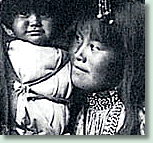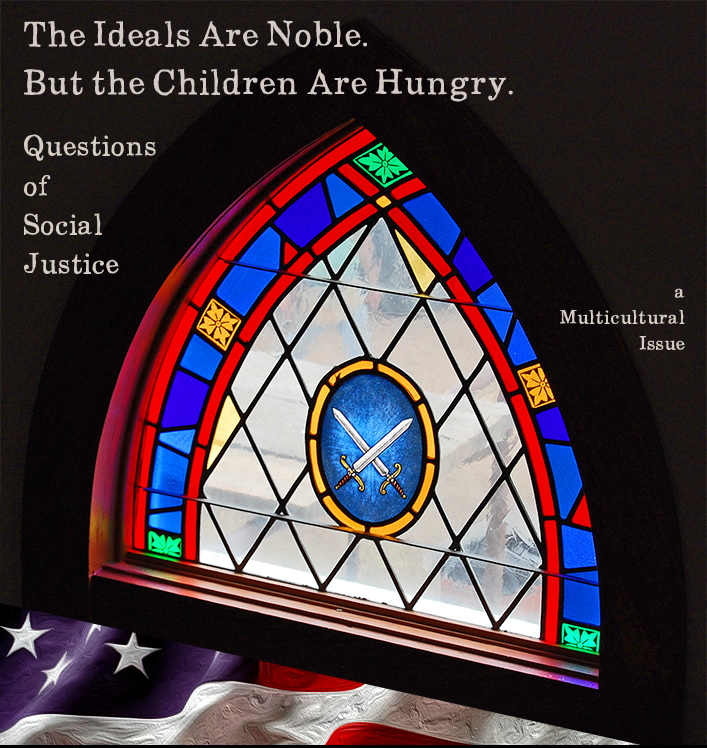

An Educator’s Responsibility
To a Self-Evident Truth
A Lament about Hungry Children at School
and a Report about the Symposium on Multiculturalism
and Social Justice at the University of Arkansas
By Freddie A. Bowles
Posted on Thursday, August 29, 2013
I recently shared the responsibility of organizing the inaugural symposium on Multiculturalism and Social Justice at the University of Arkansas, so I’ve been thinking a lot about the meaning of social justice.
In Affirming Diversity, Nieto and Bode (2012) observe that the term "social justice" is “frequently invoked but rarely defined” (p. 12). How, then, to define it?
Let’s begin with the social context implied by the term. Those of us who are citizens of the United States can find context in a self-evident truth stated in our Declaration of Independence that we are all created equal. "We hold these truths to be self-evident, that all men are created equal," Thomas Jefferson wrote in 1776. If we hold to that truth, then social justice is a “no brainer.” We are obligated by responsibility of citizenship to respect one another and uphold the admonition to regard each other as a sibling.
Historical evidence, however, shows a recurring pattern of disregard for sisterly and brotherly love in the civic affairs of our republic.
"Social justice" originated as a distinct concept (giustizia sociale) during the intellectual ferment of the Italian Risorgimento in the nineteenth century. It was first written, to our knowledge, by the Jesuit philosopher Luigi Taparelli D'Azeglio (1793-1862) in the early 1840s in Volume II of his five-volume work of theological and political philosophy, Saggio teoretico di dritto naturale appoggiato sul fatto (A Theoretical Treatise on Natural Law Resting on Fact). Taparelli's ideas, rooted in the teachings of St. Thomas Aquinas, drew attention to the harsh working conditions caused by the Industrial Revolution in Italy, including too-long days in unhealthy environments for too-little pay.
Fast forward to the United States in the 1960s when concepts of social justice were infused into the Civil Rights Movement. Beverly Tatum (1992) reminded us two decades ago that racism “…presents a serious challenge to the notion of the United States as a just [my italics] society….” (p. 6). Have we as a people overcome that challenge? Has the United States entered into a post-racial society?
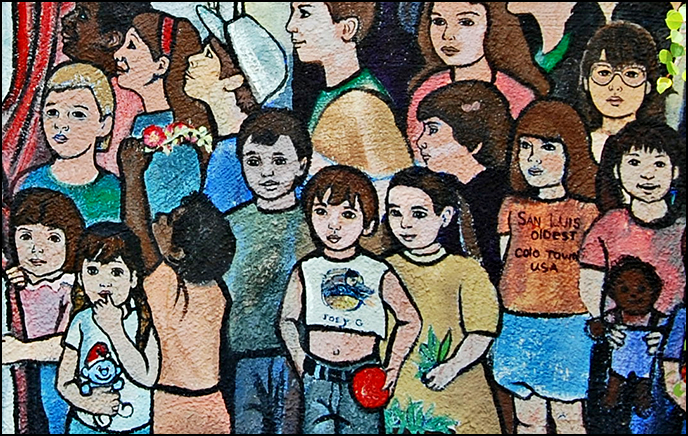
The Roll Call of Hungry Children
Challenges Our Notions about Equality.
Now we’re two decades into a new century, and issues of social justice continue to challenge our notions about equality. Think about the social implications of free and reduced lunches for poor and near poor children enrolled in public schools across the nation — an enrollment of the powerless, mired in the poverty of their family. The roll call of impovrished and hungry children increases each year to the shame of our nation According to the National Center for Educational Statistics (2013, http:// nces.ed.gov/ pubs2012/ pesschools10/ tables/ table_07.asp ), 48 percent of students in public schools in 2010 were eligible for free or reduced-price lunch. Arkansas stood at 60.4 percent.
So, six of every 10 Arkansas children arrive at school facing “food insecurity” (bureaucratic jargon) — in plain terms, these youngsters are hungry. School districts work with state and federal governments to provide free or reduced-priced lunches, but out-of-school factors (OSFs) place severe restraints on the effectiveness of school interventions to address the issue of poverty and learning (Berliner, 2009).
Is this just? One might argue that state and federal governments are just in providing free and reduced lunches for students with “food insecurities,” but that argument glosses over the underlying causes for hungry kids at school. Chief among these causes are the working poor, high unemployment, and outsourcing of jobs. Whatever the cause, food insecurity is a social issue that is absolutely unjust.
Statistics Speak to Very Real Problems
Based on Low Wages, Skewed Distribution of Wealth.
Statistics are dry and formal, yes: But the messages delivered by analysis of sound data speak to real problems in the daily lives of so many struggling familes and children. What more can be learned from analysis of the statistics of social justice?
“Low wages and a lack of higher education contribute to families having insufficient incomes," according to the National Center for Children in Poverty. Nationally, 48 percent of low-income children have at least one parent who works full-time, year-round. In Arkansas, the figure is 50 percent” (http:// nccp.org/ profiles/ AR_profile _48.html). Being employed in the U.S.A. is no guarantee that one's children will be well-fed. The Center also reminds us that 31 percent of low-income families have at least one parent with some college credits. How, then, can the U.S. have so much poverty when research points out that low-income families have some college education and one or more parents who are employed? The answers emerge from the controversial and contentious dynamics of economics and social structure and are based on issues of control and distribution of the nation's wealth. There's money aplenty, but it flows into the coffers of the few. Demands for equity are lost in the high and mighty's stranglehold on discourse and disbursement.
Business Insider (http:// www.businessinsider.com/ new- charts- about- inequality-2011-11? op=1), ranks the United States as having the highest income inequality of all developed nations. The U.S. ranks alongside Mexico and Brazil in income disparity, a fact that should challenge our notions of economic superiority. The inequity of wealth distribution in the U.S. is illustrated by the fact that almost 20 percent of the national income goes to only one percent of the population. In addition, the median income has dropped 10 percent since 2009. Is it any wonder that six out of 10 of Arkansas children arrive at school hungry?
It's a statistical horror show. Business Insider also tells us that the top one percent of U.S. citizens, about 315,000 individuals, owned 33.8 percent of national wealth in 2007.
The flow of cash and the ownership of wealth is funneled and concentrated into the hands of an elite few. Though it's nothing new in the affairs of the human race, disparity in its present manifestation seems beyond the pale of understanding and societal good sense.
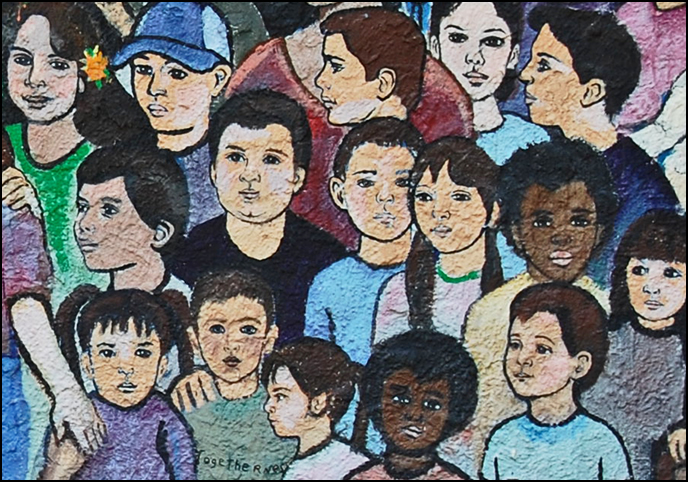
How Do We Move Past the Problems
And Make Social Justice a Reality?
Private non-profits, religious institutions, and volunteers are stepping up to alleviate the gap between the haves and the have-nots, but their altruistic and selfless efforts are undermined by the steady loss of jobs, once the driving force of the U.S. economy, to low-wage workers in underdeveloped countries. Profit and elitism, not jobs and labor, now drive our economy.
How do we, the members of the middle and working classes, the bread winners who own most of the U.S. national debt but hold only a quarter of the national wealth, begin to shift the economic balance toward equity? How do we "make it so" that all of the republic's children arrive at school with food security instead of hunger? How do we make social justice a reality instead of an academic or philosophical theory?
Solutions begin locally, here in the village, where like-minded folk with a sense of love and service agree to act on the notion that community matters. Based on Tapparelli’s understanding of social justice, human beings naturally form associations to meet the basic goals and needs of society and to help those in need. It's just not that complicated. At the local level and in contemporary culture, community should be inclusive of all groups. Each group should be heard. Each group's concerns and ideas should be given full consideration. Consensus should be based on the wise integration of a wide variety of perspectives.
How can anyone among us deny the truth that when a single member of our community suffers from want or injustice, then each and all of us are harmed?
We Gather Together at the Symposium
On Multiculturalism and Social Justice
Because We Want to Turn Ideals into Action.
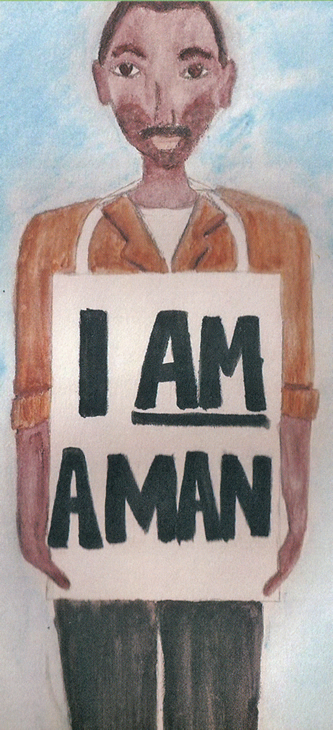
Illustration by Jerica Webster Mitchell
from the book In the Presence of a King
by Angela Webster-Smith
As a vested member of the professional and academic fellowship at the University of Arkansas College of Education and Health Professions, it is my responsibility to associate with organizations committed to social justice and to seek out fellow citizens concerned about the basic needs of every member of our local and extended communities. Opportunities for association arise on multiple levels, but most importantly in the day-to-day contact with other empathetic educators, students, and community activists.
How do our lofty ideals move beyond theory and pronouncement into effective action?
Sometimes we form groups and look for ways to direct our efforts into coordinated action. I offer by way of example this report of a small step forward on the road toward social justice. This past summer I participated in the first symposium on Multiculturalism and Social Justice sponsored by the Department of Curriculum and Instruction and supported by the University of Arkansas African and African American Studies Program, the University of Arkansas Center for Social Work, the University of Arkansas ESL Symposium, and the University of Arkansas Multicultural Center.
Stepping Out To Define, Implement
And Practice Principles of Social Justice.
Thirty-five participants gathered in early June for a spirited study of the term social justice — how it is defined, implemented, and practiced by education practitioners in the state of Arkansas. The theme of the symposium — Stepping Out, Stumbling, and Stepping Out Again: Classrooms, Conversations, and Communities — guided our discussion about the ways our culture expresses the concepts of social justice: through the power of the spoken word in private and public conversations, in the classroom through instructional practices, and in the communities through activism.

Dr. Angela Webster-Smith
The keynote speaker, Dr. Angela Webster-Smith, encouraged all participants to utilize reflectivity to examine our sociocultural beliefs and how they impact our teaching and learning. Her presentation, “Reflective Living: The Way to Courageously Step Out, Stumble, and Step Out Again for Thriving Classrooms, Meaningful Conversations, and Productive Communities,” included a model, Webster-Smith’s Pyramid of Self Reflection, to guide us in developing reflectivity in our daily lives and professions. She also reminded the audience that social justice is a process. We begin the process by examining our beliefs and why we believe, reflecting on what we say and do (or not do), and looking at how our actions and habits reflect those beliefs.
Dr. Angela, author of In the Presence of a King, also signed copies of her engaging book about history and social justice. Dr. Angela was seven when she heard Dr. Martin Luther King Jr.'s last speech in Memphis. The experience inspired her to write In the Presence of a King, which weaves a compelling tapestry of life lessons and ethical values into a fully realized work for the gentle edification of readers from eight to eighty.
Legacies: The Intergroup Education Movement
and the Defining Work of Arkansan James A. Banks
After the keynote speech, Dr. Nancy P. Gallavan and Dr. Lonnie Williams showed examples of publications related to the symposium theme. Dr. Gallavan is editor of Annual Editions: Multicultural Education and Dr. Williams is co-editor of African-American Perspectives: Northeast Arkansas. Dr. Gallavan also provided the audience with some suggestions for submitting articles. Dr. Williams brought copies of Remembrances in Black: Personal Perspectives of the African-American Experience of the University of Arkansas 1940s-2000s, which he co-edited with Dr. Charles F. Robinson II, Vice Provost for Diversity at the University of Arkansas . Dr. Gallavan’s and Dr. Williams’ publications are rooted in the legacy of the Intergroup Education Movement of the 1940s and 1950s, which sought to improve relations among ethnic, racial, religious, and social groups in the United States.
Multicultural education as an academic body of work is encapsulated in the writings of a fellow Arkansan, James A. Banks, who was raised on a farm in the Mississippi River delta lands near Marianna, Arkansas. Known as the father of multicultural education, Dr. Banks bequeaths a wealth of research, synthesis, and observation to educators and teachers. He describes, defines, and illuminates the concepts of “multicultural education” in a pioneering oeuvre of books, book chapters, and scholarly articles representing over 40 years of research and investigation. (http:// www.encyclopediaofarkansas.net/ encyclopedia/ entry-detail.aspx? entryID=4682).
I mention Dr. Banks because his work provided a framework for the two concurrent workshops of the symposium, which addressed the themes of "Classroom" and "Converations." I was privileged to lead the Classrooms workshop through a series of activities designed to examine cultural knowledge and variables of diversity (Banks, 2014). Participants were also provided with resources to use in their own classrooms and offices.
Dr. Charlene Johnson began her workshop on Conversations with a list of phrases, asking participants to figure out what they meant. Because language and culture are inextricably intertwined, Dr. Johnson focused on the importance of language as the lens through which our students view the world. She also showed educators how to use that knowledge for future learning (Gay, 2000).
The Journey of One Reflects the Journeys of All.
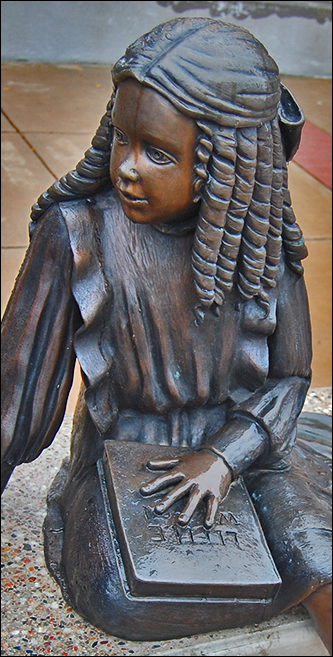
One of the Children of Peace
in downtown Bryan, Texas
by sculptor Gary Lee Price
The symposium closed with a panel of guests representing some of the diverse communities of our multicultural society. Research shows us that schools benefit from actively engaged parents and community leaders (Nieto & Bode, 2012). Each community panelist presented a historical narrative of their educational journeys and their community-based activism.
Dr. Diana Gonzales-Worthen traced her journey from Texas to Northwest Arkansas as one of the early pioneers in developing English as a Second Language (ESL) programs. Project Teach Them All and Project RISE currently provide classes for in-service teacher to obtain endorsements from the Arkansas Department of Education in ESL.
Jessie Bryant, retired, reflected on her educational journey, which led her from Fayetteville to Fort Smith, where she graduated from high school. She moved from the mountains to the river valley because African-American education in Fayetteville was limited to elementary grades. Students who wanted to finish high school had to travel to Lincoln High School in Fort Smith. Mrs. Bryant’s story culminated with her description of how she founded the Fayetteville Free Clinic.
Carmen Chong-Gum, Marshallese consul general for Northwest Arkansas, began her journey by crossing the Pacific Ocean and traveling to Missouri for post-secondary education. She returned to the Marshall Islands before settling in Springdale, Arkansas, where she serves as a translator, role model, and advocate for the Marshallese community.
After a brief question and answer session moderated by Arkansas NAME secretary, Dr. Kathleen Collins, I invited participants to attend another inaugural event later this year. The first state meeting of the newly chartered Arkansas Chapter of the National Association for Multicultural Education (NAME) at the University of Central Arkansas will be held in Conway on September 26. You can find details about the inaugural meeting in the links section below. I encourage you to join us and help build the chapter.
Dr. Johnson bid the group farewell and safe travel. She thanked each of us for our enthusiasm and participation at the inaugural symposium on Multiculturalism and Social Justice.

Banks, J. A. (2014). An introduction to multicultural education, 5th ed. New York, NY: Pearson
Berliner, D. C. (2009). Poverty and potential: out-of-school factors and school success. Boulder & Tempe: Education and the Public Interest Center & Educational Policy Research Unit. Retrieved from http://nepc.colorado.edu/publication/poverty-and-potential
Burke, T. P. (2013). The Origins of Social Justice: Taparelli d’Azeglio. Retrieved from http://www.therightplanet.com/2013/04/the-origins-of-social-justice-taparelli-dazeglio/
Gay, G. (2000). Culturally responsive teaching: Theory, research, & practice. New York, NY: Teachers College Press.
National Center for Children in Poverty. (2013). Basic facts about low-income children: Children under 18 years, 2011. Retrieved from http://www.nccp.org/publications/pub_1074.html
National Center for Educational Statistics. (2013). Numbers and types of public elementary and secondary schools from the common core of data: School year 2010. Retrieved from http://nces.ed.gov/pubs2012/pesschools10/tables/table_07.asp
Nieto, S., & Bode, P. (2012). Affirming diversity: The sociopolitical context of multicultural education, 6th ed. New York, NY: Pearson.
Tatum, B.D. (1992). Talking about race, learning about racism: The application of racial identity development theory in the classroom. Harvard Educational Review, 62(1), 1-8.


The Symposium Program
Stepping Out, Stumbling, and Stepping Out Again: Classrooms, Conversations, and Communities. For the record, you're invited to read the program for the symposium on June 11 and 12, 2013, at the GuestHouse International in Fayetteville, Arkansas. The program includes a biography of keynote speaker Dr. Angela Webster-Smith, the order of events and activities, and "Publishing Tips in Multicultural Education." Kindly click and go!
NAME Arkansas Chapter
The Arkansas Chapter of the National Association for Multicultural Education was officially recognized by the national organization in 2012. We invite you to visit the web of our state chapter. Kindly click and go!
Reflective Living with Dr. Angela
Symposium keynote speaker Dr. Angela Webster-Smith is an accomplished speaker, writer, and educator. Her book In the Presence of a King is grand in purpose and inspirational in realization. Dr. Angela's web tells us that "its highest intention is to help children understand the ways they are special, to identify their various intelligences, to curtail hopelessness, and to connect their intelligences with the schooling process." We encourage you to visit her web.




